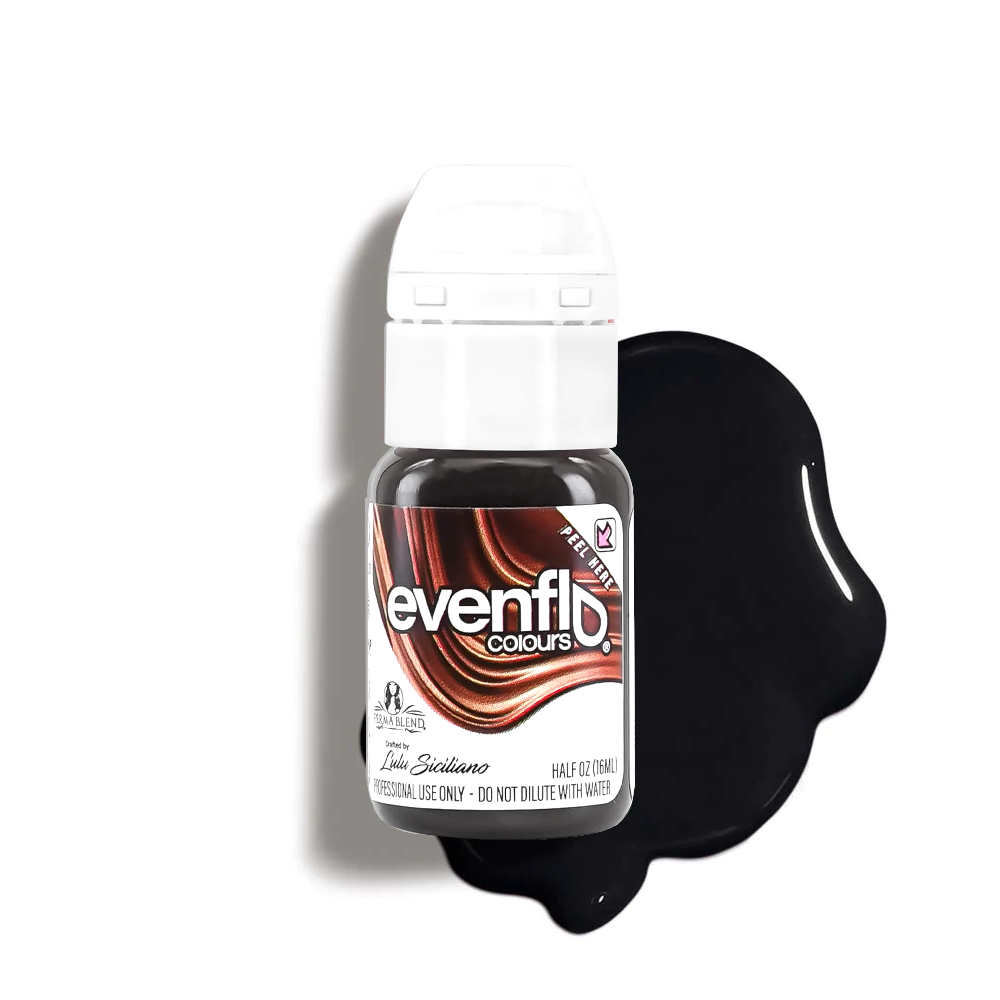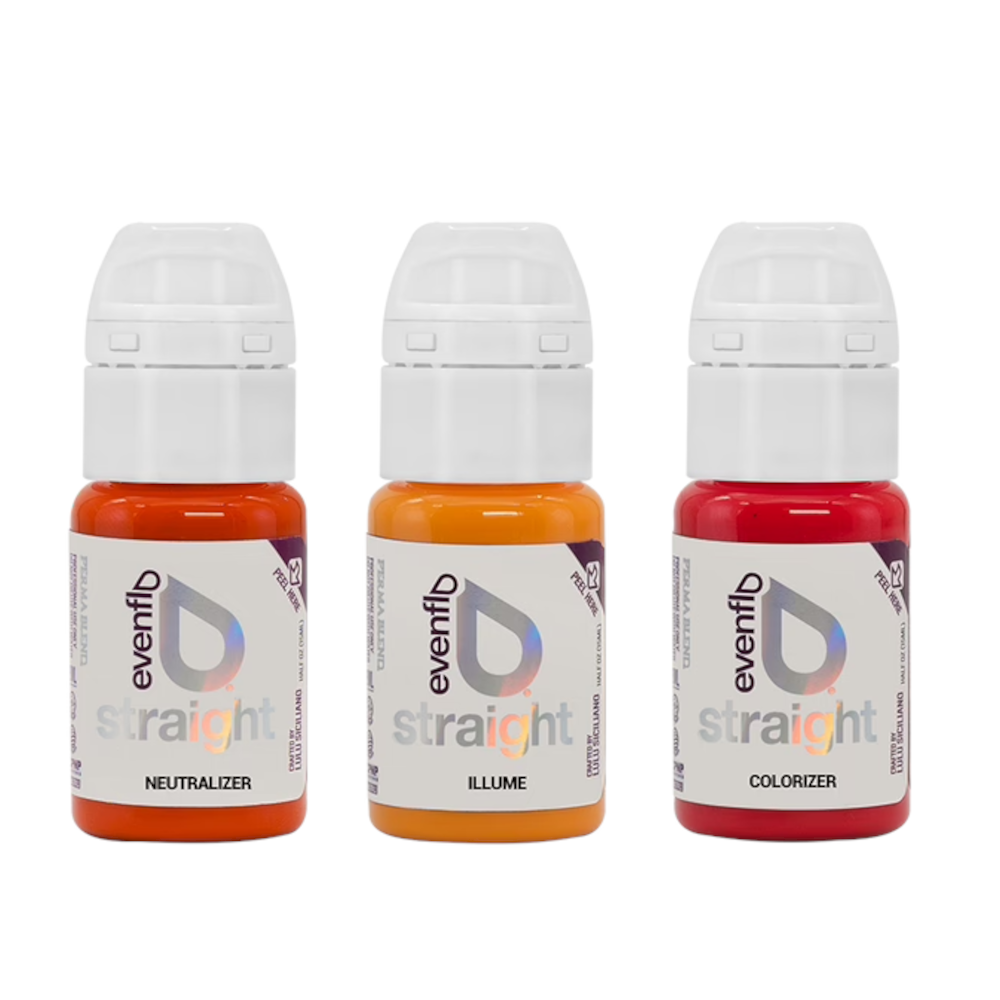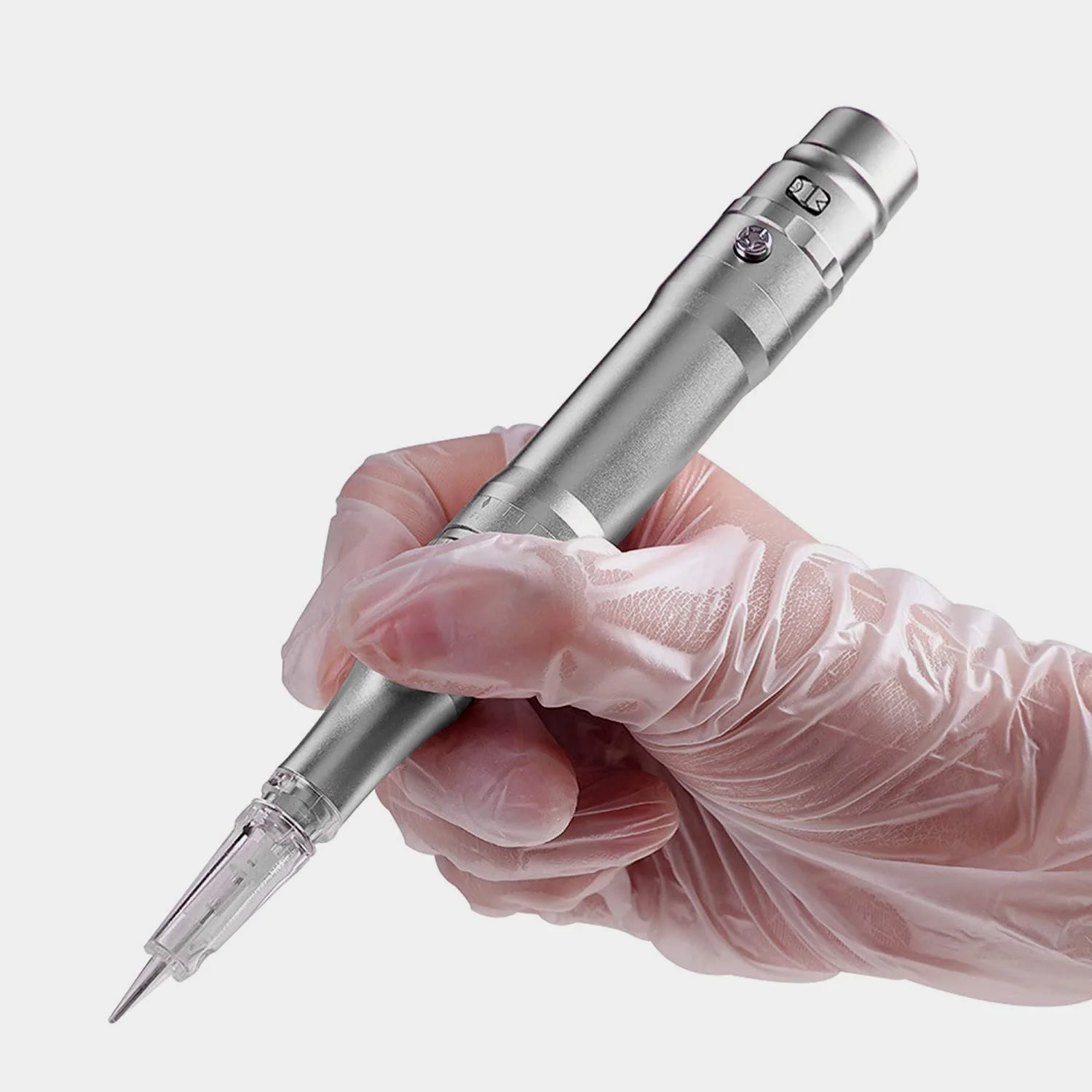Permanent Makeup
Wake up effortless
Perfection
Athena brings a decade of experience to the table as a brow slayer and beauty perfectionist. Before any permanent makeup service she ensures a comprehensive consultation, precise “mapping”, and understanding of color theory. She will (literally) hold your hand throughout the entire process, alleviating any concerns you may have. Both she and our team want you to be happy and thrilled with your results.
Priceless
Permanent makeup is as a time-saving solution, eliminating the daily need to apply and reapply makeup. This saves valuable minutes in the morning, allowing for more focus on important tasks or a more relaxed start to the day.
Modern
Permanent makeup is a distinct and advanced technique that uses pigment instead of ink, depositing it in the upper epidermis. This results in less pain, shorter-lasting results, and faster healing, leading to a more natural-looking outcome that enhances one's natural beauty.
More Information + Frequently Asked Questions
-
Permanent makeup, also known as cosmetic tattooing, is a type of superficial tattooing that involves applying pigment into the skin’s dermal layer to enhance features such as eyebrows, eyes, and lips.
-
Given that it fades, permanent makeup is, in actuality, only semi-permanent and needs to be refreshed over time to maintain desired results.
Cosmetic tattooing is an art, not a science and results will vary. It is not necessarily a no maintenance treatment, but a low maintenance treatment.
No two sides of the face are the same or perfectly symmetrical and trying to obtain perfect symmetry is always the goal.
-
They are not.
Powder/ombre brows is done using a hand-held device and allows you to achieve realistic looking hair strokes.
Powder brows generally have a more defined finish, as if you've got them perfectly filled in with your favorite brow pencil.
-
Your lifestyle choices (such as smoking), age, genetics, cellular turnover, and skin type.
Not properly following the provided aftercare instructions.
Sun exposure and not wearing SPF.
Use of anti-aging products or acidic cleansers.
Color selection: lighter colors fade faster.
Bleeding during the procedure will reduce the amount of pigment absorption.
*Alcohol, fish oils, and certain medications act as blood-thinners and should not be taken prior to and following your appointment.
-
You are, if your skin is in good condition.
You are not a candidate if your skin is prone to conditions such as complications with eczema, psoriasis, keratosis pilaris and dermatitis.
*See a full list of contraindications on this page.
-
Most clients typically need a 2nd sessions 6-8 weeks after your 1st session when you skin has fully healed.
A refresh is recommended annually or biannually to achieve desired results.
-
Permanent makeup shouldn't be painful but some discomfort is a normal reaction and is temporary.
We use a 5% topical lidocaine to numb clients prior to your service.
-
Expect your appointment to take 2+ hours.
This will ensure enough time for a thorough consultation, shaping/mapping, color selection, numbing and for the service to be completed.
-
It is advised to get filler 8 weeks before or 8 weeks after your touch up.
Have your lash extensions removed for an eyelash enhancement.
We advise that you wait until you lids are healed to get a full set of lashes or a lash lift.
-
Do not drink alcohol for 24 hours prior to your treatment.
Avoid other skin treatments and waxing.
Stay out of the sun.
Stop taking NSAIDs, fish oil supplements, and other blood thinners.
Oral muscle relaxants must be avoided.
-
The healing process takes 6-8 weeks in which your brows, lips, or lashes will go through healing stages.
Stone Fox will explain and provide you with all the healing process information.
-
Peel Series
Dermaplaning
Microneedling
Microdermabrasion
Fillers
-
Consultation strongly recommended:
Previous history of permanent makeup or microblading
Scars in the brow area
You are not a candidate if any of the following apply:
Heart conditions, pacemakers, or defibrillator
Active cancer of any kind
Prone to keloids
History of shingles (may cause flare-up close to the eyes which may lead to blindness)
MRSA (highly contagious)
Certain Medications: Triflusal (Disgren), Clopidogrel (Plavix), Prasugrel (Effient), Ticagrelor (Brilinta), Ticlopidine (Ticlid), Cilostazol (Pletal), Vorapaxar (Zontivity), Dipyridamole (Persantine), Coumadin, Pradaxia (Dibigatran), Xarelto (Rivaraxaban), Eliquis (Apixaban), Savaysa (Edoxaban)
Trichotillomania (compulsive pulling of body hair)
Eczema, psoriasis, or dermatitis (in or around the brow area)
Large pores on your forehead and in the brow area (pigment may heal patchy)
Hemophilia (bleeding disorder)
Menopause (hot flashes may cause pigment to not retain)
Platelet disorder
Moles or breakout in the brow, eye or lip area
Piercings in the brow or lip area (pigment might migrate)
Deep wrinkles in the brow area (pigment will not lay properly in the creases)
Hair transplant for eyebrows (pigment will not take in the scar tissue)
Thyroid conditions (Hypo or Hyper Thyroidism- (pigment might not retain or fade faster)
Rosacea (due to hypersensitivity the pigment will not take)
Fitzpatrick skin types 1 and 2 (redheads/natural blondes/light skin/light eyes) (pigment will not retain
Extremely thin or vascular skin (due to hypersensitivity, the skin does not take the pigment well)
Exercising 5-7 days a week (sweating will cause the pigment to not retain, fade or change in color)
Physicians consent required:
Recent facial surgeries
Auto-immune disorders (Multiple Sclerosis Rheumatoid Arthritis, Lupus, Type 1 Diabetes, Alopecia Areata)
Graves’ Disease or Hashimoto’s Thyroidism
Time sensitive contraindications:
Pregnant, breastfeeding, or trying to become pregnant (2-3 months after delivery/breastfeeding)
Use of Retin-A/Retinol or Vitamin A oral supplements (must discontinue use 30 days prior)
Use of Accutane (within 12 months)
Chemotherapy and/or radiation (within 6 months)
-
A complimentary aftercare kit will be provided (home care instructions, spoolies, cotton swabs, soap, ointment, + visor)
Day Of
Do not touch your eyebrows for the first 3-4 hours
The 1st night
Gently wash your eyebrows with the soap provided
Do not apply ointment
The Next Morning
Gently rewash your eyebrow with the soap provided
After 24 Hours
Apply a grain of rice size amount of the provided ointment. If you have an oily skin type, no ointment should be applied and you should dry heal.
Day 2-14
After the first two cleanses do not get your eyebrows wet for 14 days. Use the water protective shower visor during showers.
No facials, sweating, long hot showers, baths, hot tubs, or saunas
Apply ointment once daily. If you have an oily skin type, no ointment should be applied and you should dry heal.
Try your best to sleep on your back
Day 15
Wash your eyebrows with the soap provided to remove any remaining scabs
Start using regular skincare and SPF over the eyebrow area (no retinols, acids, exfoliating, or lightening products)
You can now get tox and fillers
Day 1-30
No sun exposure or tanning
-
On average it takes around 28 days for our skin to heal from any trauma, but it can take longer for some clients. This is why touch-ups are scheduled no earlier than 6 weeks after the first session. This is what you can expect during that time:
Day 1-2
Your brows will be 20-40% darker, bolder and more solid than your healed results
Under the pigment, the skin is red, and pigment has been deposited into the layer of skin containing dead skin cells: combined giving the darker appearance.
There may be minimal swelling
Day 3
Your brows may begin to itch but do not scratch them
The pigment may appear somewhat raised
Day 3-5
The top layers of skin will begin to shed and you will see loss of color. This is normal, and the pigment that was deposited superficially will come off with the skin that is embedded within. Do not pick or peel your skin. If you pull the skin off, you will remove ‘plugs’ of dermal pigment because it has not detached itself completely at this point.
Day 4-6
The skin will start to rapidly exfoliate and should be left alone so that is sheds evenly
The color under the exfoliating skin will continue to appear light under the epidermis takes on its more transparent characteristics
Day 30-40
Skin has had a full cycle of cellular regeneration
The pigment has not become a part of the dermis, seen under the epidermis
-
A complimentary aftercare kit will be provided (home care instructions, lipgloss wands, antiseptic wipes, + ointment)
Day Of
Do no eat for at least 5 hours
Gently wipe lips with a new antiseptic wipe every 1-2 hours until bedtime
Do not apply ointment
The Next Morning
Gently wash lips with room temperature water to remove any overnight lymph buildup
Apply a thin layer of the ointment provided. Only once!
Day 1-3
No kissing or oral sex
Try your best to sleep on your back
Do not eat spicy, oily, acidic, or greasy food
Drink through a straw
Day 1-7
Do not apply lip products
Do not use any soaps or cleansers
Day 2
Gently wipe lips with a new antiseptic wipe 2x throughout the day
Apply a thin layer of ointment 2x throughout the day
Day 3-7
Apply a thin layer of ointment 3x per day
Day 1-30
No sun exposure or tanning
General
Do not pick, pull, or peel on the peeling skin
Keep your hands clean and avoid touching your lips until they are done healing
If you get a cold sore, contact your doctor immediately to avoid an infection
-
On average it takes around 28 days for our skin to heal from any trauma, but it can take longer for some clients. This is why touch-ups are scheduled no earlier than 6 weeks after the first session. This is what you can expect during that time:
Right After
Lips will be swollen, feel sore and the color will appear bright and bold
Redness around the lips can be present
Day 1
Your lips will be appear 50% darker, bolder and more solid than your healed results
Swelling should have subsided by now
Day 2
Lips will feel dry and might start cracking slightly on the surface
Day 3
Your lips might begin to peel, and the pigment may appear to be somewhat raised
You will see a loss of color where the scabs come off
Day 4-6
The skin will start to rapidly exfoliate and should be left alone so that is sheds evenly
The color under the exfoliating skin will continue to appear light under the epidermis takes on its more transparent characteristics
Day 30-40
Skin has had a full cycle of cellular regeneration
The pigment has not become a part of the dermis, seen under the epidermis
-
A complimentary aftercare kit will be provided (home care instructions, lipgloss wands, antiseptic wipes, ointment, + visor)
Day Of
For the first 4 hours following your procedure, wipe the treated area every hour with an antiseptic wipe
If needed for swelling, apply an ice pack provided, for 10-15 minutes each hour or the first 4-8. hours following the procedure.
The Next Day
Wipe the treated area morning, afternoon and evening using an antiseptic wipe
Day 1-7
Do not get wet
Do not use soaps, cleansers, lotions, makeup, oils, false eyelashes, and eyelash curlers
A very thin layer of the provided ointment should be applied consistently throughout the day to the treated area using a clean cotton swab. Do not over apply ointment thus leading to premature permanent pigment fading. Do not apply too much pressure when applying ointment. And do not let the treated area become too dry
No sweating
Use the protective shower visor provided when showering
Avoid dirty and dusty areas
Day 1-30
No saunas, swimming, hot tubs, sun exposure, steam rooms, long hot showers, massage, facials, eyelash tinting, lash lifts or extensions Do not use products containing alcohol, lactic or fruit acids, retinol, glycolic acid, or eyelash serums
General
Do not pick, pull, or peel on the peeling skin
Keep your hands clean and avoid touching your eyes until they are done healing
Use lubricating eye drops if you experience any dryness in your eyes
-
On average it takes around 28 days for our skin to heal from any trauma, but it can take longer for some clients. This is why touch-ups are scheduled no earlier than 6 weeks after the first session. This is what you can expect during that time:
First Few Days
Some swelling and bruising around the eyes is expected
Slight tenderness, tightness and itchiness around the eyes (can last a week)
Day 3-7
A thin film (like a sunburn peel, not a scab) will appear
The film will peel off by itself after days 5-7 and may not exfoliate evenly
Picking the film may cause irritation, can lead to scars, and will lift color from the treated area resulting in unevenness and blank spots
The color may fade during the healing process
The color may look cloudy or shiny
4-6 Weeks
During healing the new skin cells are covering the pigment inside. When skin calms you will notice that the pigment will start lookin darker again
After your touch-up session, the pigment will hold better and should feel and heal a lot quicker









